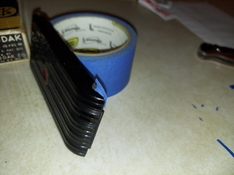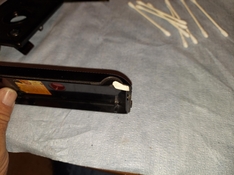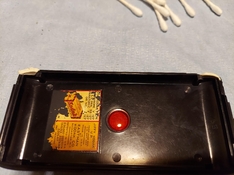Eric the Red
Member
Good afternoon!
I recently came into possession of a couple of Kodak cameras at an auction. One is a Bantam Flash, and the other is a Jiffy V.P.. The Bantam is in good physical shape, save for a sluggish/sticky shutter, and a small crack in the bakelite back. I have been able to research here how to effectively repair the crack, and am confident I can repair this one.
The Jiffy however, has a small chip missing in two places. One on the camera body and one on the back. I realize this camera is not "collectible" or even highly desirable by any means, so I figured it would be good as a learning tool.
I cannot find any information on repairing peices that are missing. I hope I might be able to use J.B. Weld, and sand it down to match the existing edge. Maybe.
Any other suggestions? Other than wrapping the body seam with tape?
Thank you.
Eric
I recently came into possession of a couple of Kodak cameras at an auction. One is a Bantam Flash, and the other is a Jiffy V.P.. The Bantam is in good physical shape, save for a sluggish/sticky shutter, and a small crack in the bakelite back. I have been able to research here how to effectively repair the crack, and am confident I can repair this one.
The Jiffy however, has a small chip missing in two places. One on the camera body and one on the back. I realize this camera is not "collectible" or even highly desirable by any means, so I figured it would be good as a learning tool.
I cannot find any information on repairing peices that are missing. I hope I might be able to use J.B. Weld, and sand it down to match the existing edge. Maybe.
Any other suggestions? Other than wrapping the body seam with tape?
Thank you.
Eric






